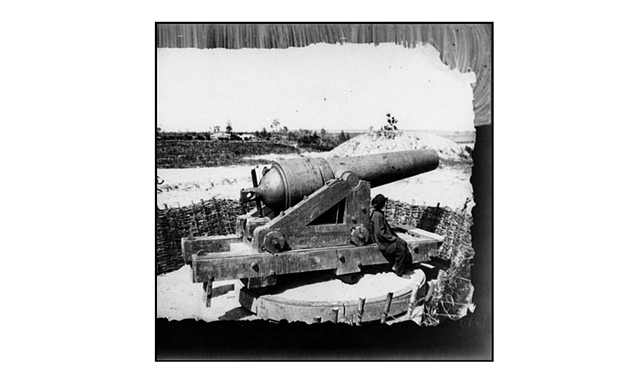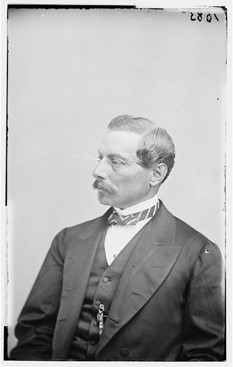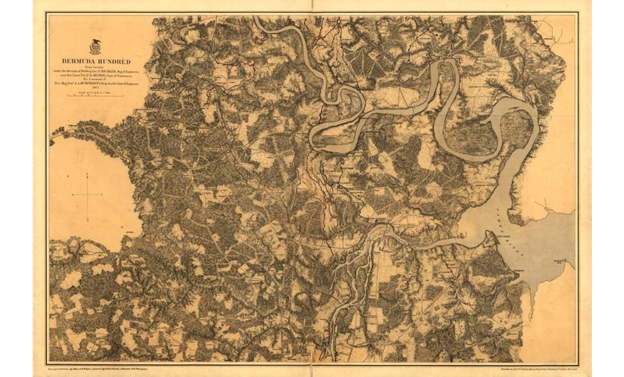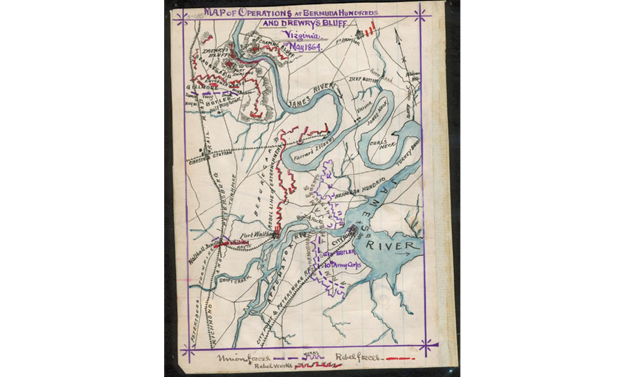Sealing the Cork: The Forgotten Battles of Foster’s Place and Ware Bottom Church
ECW welcomes guest author Aaron Stoyack
Lieutenant General Ulysses S. Grant initiated a multi-pronged campaign in the spring of 1864 to destroy the Confederacy. The Army of the Potomac commanded by Major General George Gordon Meade undertook one of the two main thrusts, marching toward Richmond against General Robert E. Lee and the Army of Northern Virginia. Major General William T. Sherman spearheaded the other offensive toward Atlanta. To support these operations, Major General Nathaniel P. Banks campaigned against Mobile, Alabama, Major General Franz Sigel advanced into the Shenandoah Valley, and Major General Benjamin F. Butler operated against Richmond from the southeast.
The Army of the Potomac drove Lee’s forces toward Richmond, vying to catch and destroy the rebels in an open field of battle before joining with Butler to assault the city and its supply lines.. Butler’s Army of the James numbered 30,000 men ferried inland on water transports via the James River. They advanced toward their objective after establishing bases at City Point and Bermuda Hundred, a peninsula on the James. Butler found initial successes in early May, approaching the outlying works encircling Drewry’s Bluff. By May 15th, Butler was only eleven miles south of the Confederate capital. But the outnumbered commander opposite him stymied his efforts the next day.
General P.G.T. Beauregard concentrated 17,000 soldiers for a three-pronged assault designed to force Butler away from the Confederate defenses. The May 16th attack at Drewry’s Bluff succeeded, and although Butler could have found an intermediate position, he withdrew to his existing lines across Bermuda Hundred.
Ulysses S. Grant remarked in his reports that after the 16th, Butler’s army “…though in a position of great security, was as completely shut off from further operations directly against Richmond as if it had been in a bottle strongly corked.”[1] Grant’s quote informed the historical study of the Bermuda Hundred Campaign, leaving little room to examine subsequent events. Confederate forces pressed their advantage in the following days, securing ground to ensure the bottle’s indefinite closure.
Federal soldiers spent May 17th preparing fortifications for a prolonged defense. Beauregard’s graycoats cautiously advanced toward the bolstered entrenchments and constructed a line fronting the Union position. On the south bank of the James, Colonel William R. Terry’s brigade dug what would come to be known as Battery Dantzler. This was the first of a string of earthworks called the Howlett Line that extended from the James to the Appomattox. These trenches and accompanying batteries could stifle any infantry advance and discourage Union naval expeditions upriver.

Beauregard wished to push back Union picket posts and extend his works. By doing so, he could solidify the position and make it defensible with fewer men. He received requests from Jefferson Davis and Braxton Bragg to send Lee reinforcements during the Overland Campaign. Beauregard sought to comply through an offensive to make the Howlett Line impregnable.
The first target of Confederate advances was the center of the Union line on May 18th near a plantation named Foster’s Farm. Rebels quickly seized picket posts and scrambled the defenders in confusion. Elements of the 97th Pennsylvania counterattacked, forcing Confederate troops to shelter behind ravines and farm outbuildings. The Keystone Staters poured in incessant fire for nearly nine hours.[2]
Several detachments ferried ammunition to the 97th’s front throughout the day. Corporal James E. Engle of the color guard and John Parsons, a regimental musician, volunteered to transport an ammo box to their comrades despite the withering fire. Once they completed their task, Parsons was fatally injured trying to acquire more ammunition from the lines. Engle continued to dispense supplies for the entire battle. For this action, he was awarded the Medal of Honor in 1896. Ultimately, the Pennsylvanians regained their original positions and retired at 10 p.m. when darkness brought the battle to a close.
Rain on the 19th dampened any hopes for significant engagements. Artillery crews bombarded enemy positions to hinder work on the mud-filled trenches. Beauregard circulated plans for eight brigades to eliminate forward Union positions the following day. At night, Federal pickets of Brigadier General Adelbert Ames’ brigade repelled three weak Confederate skirmishes. These men were destined to fight in the Battle of Ware Bottom Church the following day.

The portion of the Union line under attack on May 20th was the weakest, as full armament and defenses in that sector were not yet emplaced. Confederates burned wood piles to create a smokescreen covering their 9:30 a.m. attack. They seized rifle pits from the Tenth Corps’ brigades of Ames and Brigadier General Alfred Terry. The attackers rapidly pushed forward nearly three-quarters of a mile across the Federal front.
The 97th Pennsylvania and 13th Indiana of Ames’ brigade failed to unseat the Southerners. Lieutenant Colonel Galusha Pennypacker of the 97th led an assault at 4 p.m. in which he received three wounds. Pennypacker returned to the field after recuperating and was brevetted a brigadier general at 20 years old in February 1865. This promotion made him the youngest general in U. S. history.

Colonel Joshua Howell counterattacked to regain Alfred Terry’s advanced positions at a significant cost. Casualties in the Tenth Corps numbered 702, compared to an estimated 800 for the Southerners. Among the rebel losses was Brigadier General William Walker. He stumbled into the 67th Ohio and attempted to pass as a Union officer. The Ohioans saw through the ruse and fired a volley, striking his horse sixteen times. As Walker ran, he was hit thrice and then captured.
Southern units succeeded in carrying several Union works. Brigadier General Bushrod Rust Johnson ordered his troops to construct an advanced line anchored to an abandoned Federal fortification. His units obeyed and extended a row of rifle pits across their front. The next day, Johnson received a promotion to major general. The defeated Yankees relocated their picket posts closer to their lines.

Victory at Ware Bottom Church allowed Beauregard’s men to push the Howlett Line closer to the Federal position. These formidable defenses firmly corked Butler into the bottle. The earthworks at Bermuda Hundred were the longest held in the entire war, from May 17th until April 3rd, 1865.
As of May 16th, Butler could at least claim to have prevented rebel units from reinforcing Lee. The Battle of Ware Bottom Church solidified Beauregard’s lines, ensuring that Confederate reinforcements could be safely dispatched.
Writing after the war, Butler attributed his decision to withdraw into his original works to the Army of the Potomac’s failure to join him within ten days as allegedly promised. Apart from Butler’s claim, no evidence suggests Grant or Meade made such a guarantee. Butler’s lack of aggression at Bermuda Hundred was one of many factors contributing to his removal on January 6th, 1865.
Aaron Stoyack is a historian, museum specialist, and writer employed as a Park Ranger at Pamplin Historical Park. He graduated Summa Cum Laude from West Chester University with a B.A. in History and a Minor in Museum Studies. Aaron has served on local commissions and presented at regional and national public history and education conferences. He enjoys researching and interpreting all aspects of history, from local to global scale.
Bibliography
Bates, Samuel P. History of Pennsylvania Volunteers: Vol. III. Harrisburg, Pennsylvania: B. Singerly, State Printer, 1870.
Butler, Benjamin F. Butler’s Book: A Review of His Legal, Political, and Military Career. Boston, Massachusetts: A.M. Thayer & Co., 1892.
“Fort Wead.” Chesterfield Historical Society of Virginia. https://chesterfieldhistory.com/ft-wead.html.
Gillmore, Quincy A. “Report of Maj. Gen. Quincy A. Gillmore, U.S. Army, commanding Tenth Army Corps, of operations May 4-25.” The War of the Rebellion: Official Records of the Union and Confederate Armies, Series I, Volume 36, Part II, 33-40. Washington: Government Printing Office, 1891.
Grant, Ulysses S. “Reports of Lieut. Gen. Ulysses S. Grant, U.S. Army, commanding Armies of the United States, including operations March, 1864-May, 1865.” The War of the Rebellion: Official Records of the Union and Confederate Armies, Series I, Volume 36, Part I, 11-60. Washington: Government Printing Office, 1891.
Hess, Earl J. Trench Warfare Under Grant & Lee: Field Fortifications In The Overland Campaign. Chapel Hill, North Carolina: The University of North Carolina Press, 2007.
Longacre, Edward G. Army of Amateurs: General Benjamin F. Butler and the Army of the James, 1863-1865. Mechanicsburg, Pennsylvania: Stackpole Books, 1997.
Pennypacker, Isaac Rusling. Galusha Pennypacker: America’s Youngest General. Philadelphia, Pennsylvania: Christopher Sower Co., 1917.
Price, Isaiah. History of the Ninety-Seventh Regiment, Pennsylvania Volunteer Infantry, During the War of the Rebellion, 1861-65. Philadelphia, Pennsylvania: Self-published, 1875.
Rhea, Gordon C. To the North Anna River: Grant and Lee May 13-25, 1864. Baton Rouge, Louisiana: Louisiana State University Press, 2000.
Robertson, William Glenn. Back Door to Richmond: The Bermuda Hundred Campaign April-June 1864. Baton Rouge, Louisiana: Louisiana State University Press, 1987.
Robertson, William Glenn. “The Bermuda Hundred Campaign April-June 1864”. Ph.D. diss. University of Virginia, 1975.
Schiller, Herbert M. The Bermuda Hundred Campaign. Dayton, Ohio: Press of Morningside, 1988.
Wise, George D. “Report of Capt. George D. Wise, Assistant Inspector-General, of operations June 2.” The War of the Rebellion: Official Records of the Union and Confederate Armies, Series I, Volume 36, Part II, 261-262. Washington: Government Printing Office, 1891.
[1] Grant, “Reports,” 20.
[2]Price, History of the Ninety-Seventh Regiment, 270.

Thank you for this great post Aaron!
Very compelling, informative read.
It was a pleasure working with ECW! Thank you for the opportunity. I look forward to collaborating with your organization more
We look forward to it, too!
Always seemed to me Gillmore and Smith under-performed.
This is an excellent analysis of an overlooked battle. I hope to see more from Stoyack in future issues.
Solid work–well done.
It always amazes me how many hundreds of thousands of cars drive through there in a day, and who would ever know there had been a battle there. (I would how Beauregard’s men made it across the interstate safely with all that traffic there!) 😉
Thank you!
I wonder the same thing, I’m sure crossing the road was half the battle! What a great job done by Chesterfield County to preserve many of the Bermuda Hundred sites, some of which are right in the middle of big developments.